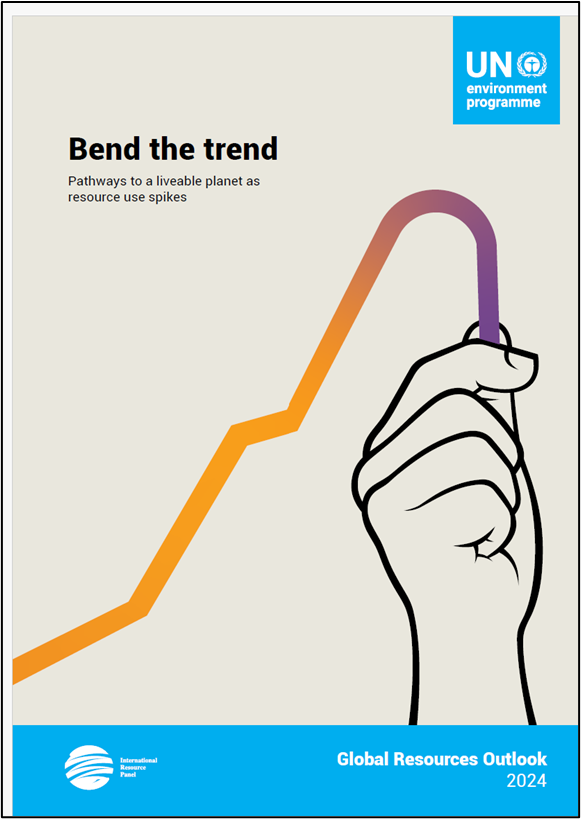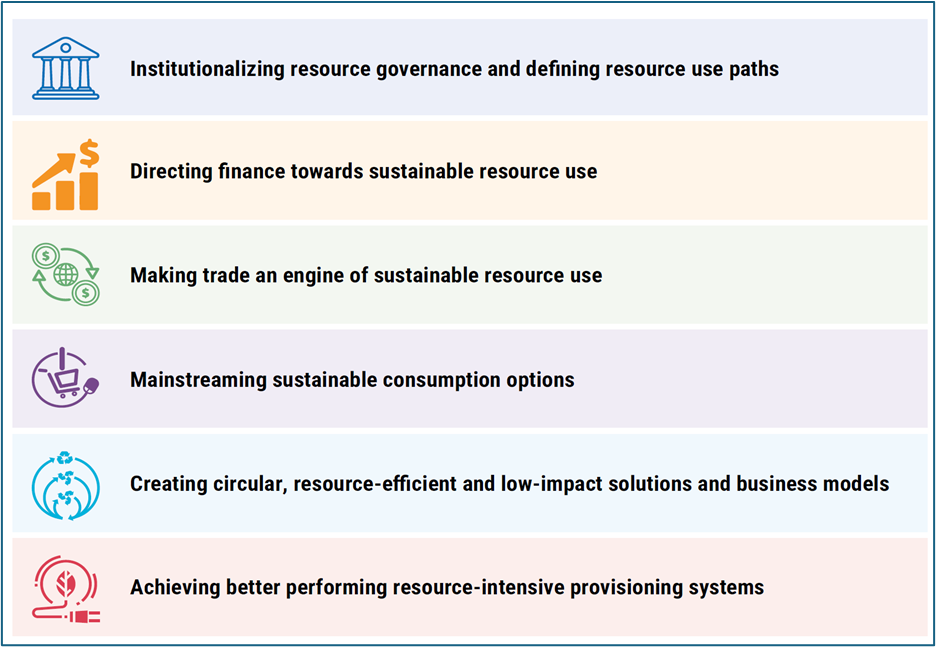The use of natural resources is crucial for the economic development of human society. However, a recent report from the United Nations Environment Program (UNEP) titled Global Resources Outlook 2024 - Bend the Trend: Pathways to a Liveable Planet shows that the unfettered and non-sustainable use of natural resources is driving the world on the brink of a disaster [1].
The report analyses the global use of natural resources, including fossil fuels, lands, biomass, minerals, metals and water from 180 countries, seven world regions and four income groups and highlights the trends, impacts and distribution effects of the use of resources.
The following main highlights from the report are indeed shocking:
- Global production and consumption of material resources has grown by more than three times over the last 50 years
- The extraction and processing of material resources - fossil fuels, minerals, non-metallic minerals and biomass accounted for 55% of greenhouse gas (GHG) emissions and 40% of particulate matter.
- Biomass (agricultural crops and forestry) accounted for over 90 % of the total land use related to biodiversity loss and water stress.

Global Resources Outlook 2024 - Bend the trend: Pathways to a Liveable Planet as Resource Use Spikes [1]
The combined environmental impact of the above-mentioned factors is leading to Triple Planetary Crises - the crisis of climate change, the crisis of nature and loss of biodiversity, and the crisis of pollution and waste.
The report also illustrates the unequal distribution of the benefits and impacts from the use of natural resources in different countries and regions. Almost half of the total global value added in resource use was generated in Europe and North America, while less than 10% of global water stress and biodiversity loss occurred in these regions. The stark picture of global inequality in the use of resources is highlighted. It shows that low-income countries consume six times less materials compared to high-come countries, even when the former is responsible for generating 10 times less climate impacts compared to the latter. Thus, while it is essential to minimize the gap in the global inequality in the usage of resources. it also imperative to use of material resources in a sustainable manner so as to reduce their wasteful use,
On the positive side, certain progress is being made in the efforts to reduce the impact of the triple planetary crises. The UNEP report takes note of the same. These efforts include the following steps:
- Forging an international legally binding agreement by 2024 to deal with the root causes of plastic pollution;
- Inclusion of resource management strategies in the global biodiversity targets agreed at the Kunming-Montreal Global Biodiversity Framework;
- Inclusion of the importance of the use of materials, land and water (for the first time), along with energy in the IPCC’s 2022 mitigation report;
- Establishment of a historic Loss and Damage fund at UNFCCC (United Nations Framework Convention on Climate Change) Conference of Parties (COP27) in 2022 mandating high in-come countries to channel financial resources towards low-income countries that have faced damage from climate change to date;
- Commitment of G7 to a Five-Point Plan on Critical Mineral Security; and
- The emphasis on the role of consumption through its cross-cutting Lifestyles for the Environment (LiFE) Initiative under the Indian G20 Presidency.
Unfortunately, the desirable changes are not taking place at the scale and speed needed to arrest the fast depletion of natural resources. The UNEP report states, “It is no longer whether a transformation towards global sustainable resource consumption and production is necessary, but how to urgently make it happen”.
The recommendations of the UNEP report are summarised in six critical aspects of the transitions, including resource institutionalization, finance, trade, consumption and production (see Fig 2).

Fig 2 Six critical aspects for the transitions towards sustainable resource use
India is a developing country supporting highest population in the world (excess of 1.4 billion). For fulfilling the basic needs and the growing aspirations of the Indian population, the country needs rapid economic and industrial developments. Thus, the demand for fossil fuels, metals, minerals and biomass is bound to witness upward trends. Thus, India cannot be expected to follow the ‘bend the trend’ strategy. Yet, because natural resources are non-renewable, India needs to adopt the sustainability approach in using its natural resources. The country need not follow the western model of development; but evolve and adopt innovative approach to achieve sustainable development.
References
- United Nations Environment Programme, & International Resource Panel (2024).Global Resources Outlook 2024 - Bend the trend: Pathways to a Liveable Planet as Resource Use Spikes.
https://wedocs.unep.org/20.500.11822/44901

